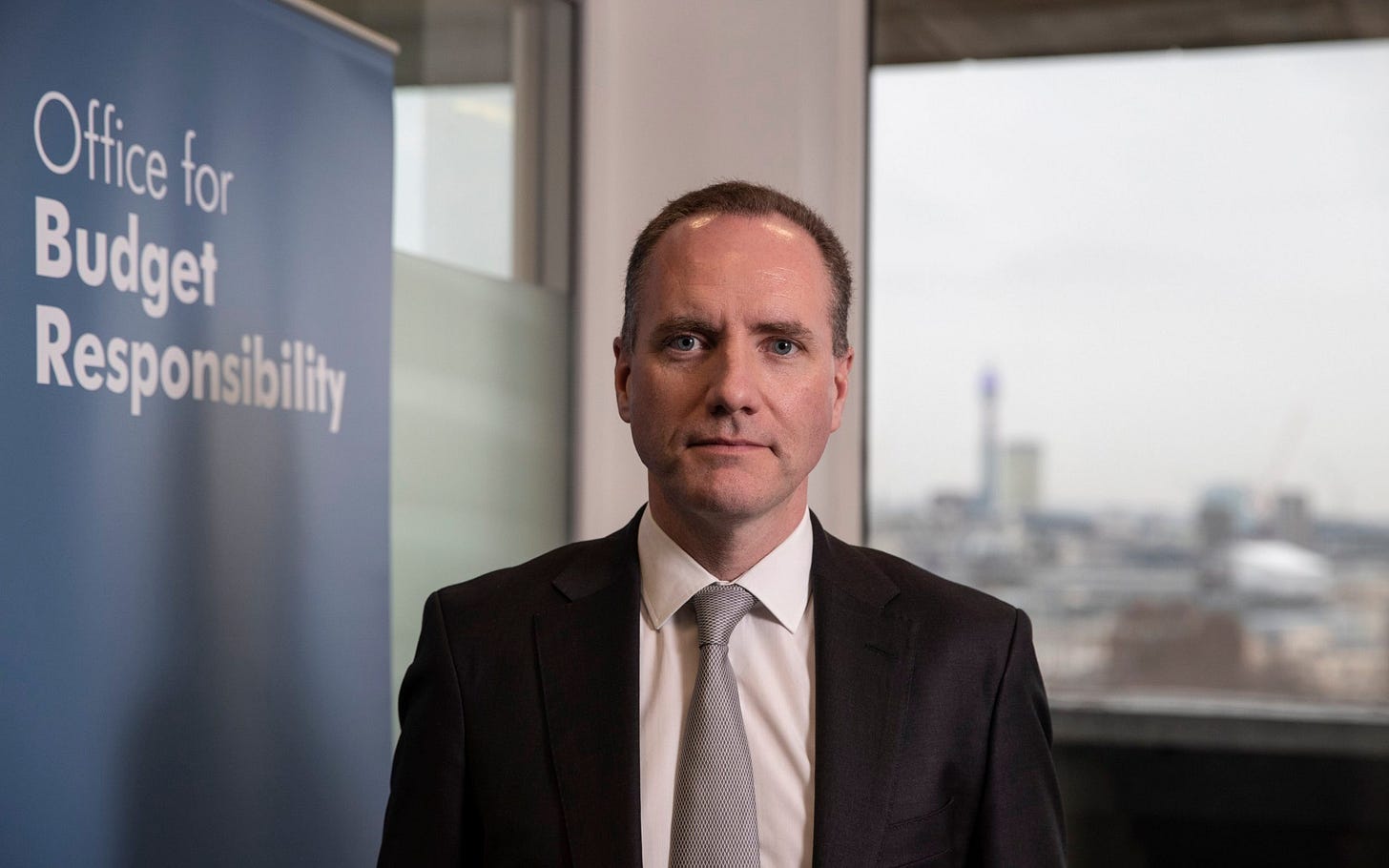The Rules of the Game
How the OBR forecasts are done and why they matter so much
Richard Hughes (pictured) is the most important person in Britain that no one has heard of. On a Google search he only comes up as the third most significant person with that name after a retired Irish jockey and an obscure pre-war novelist. Even his title – Chair of the Office of Budget Responsibility (OBR) – doesn’t begin to capture the significance of his role.
His organisation provides the economic forecast that determine whether the government is meeting their fiscal rules and, as such, the parameters of what a Prime Minister and Chancellor who want to stay within their rules can do. He takes no decisions about policy. The government can choose to change their rules at any time. But if they have invested a lot of political capital in sticking to them, as Rishi Sunak and Jeremy Hunt have, he can make their lives extremely difficult.
Hughes, and his OBR team, are currently preparing their forecast for the Autumn Statement on the 22nd November, which means it has shared initial drafts with the Treasury. Jeremy Hunt has strongly hinted – well more or less said outright – that the numbers are looking worse than in March, largely due to a big increase in debt interest payments because of high inflation. He has been speaking, darkly, of “difficult decisions” and “more efficient public services”.[1]
Meanwhile Labour, while they have carefully avoided signing up to exactly the same rules, are also emphasising their commitment to staying within the ones they set, which as I discussed in my last post, seriously constrains their space for policymaking. The spectacular collapse of the Truss government, in part because she refused an OBR assessment of her plans, has made noisy support for independent forecasts a quick way to demonstrate fiscal rectitude to the media.
All of which makes the choices that Hughes and his colleagues make, when producing forecasts, more important than ever. In the first two parts of my series explaining how the public finances work I’ve looked at what the state spends and what revenue it brings in. In this post we’ll look at the critical third piece of the puzzle: how does the OBR assess how much space there is for future changes to spending and tax. We’ll start with the basics of how their forecasting is done before looking at what we can learn from systematic errors in previous forecasts, and the lessons they hold for a future government.
Keep reading with a 7-day free trial
Subscribe to Comment is Freed to keep reading this post and get 7 days of free access to the full post archives.


